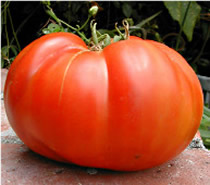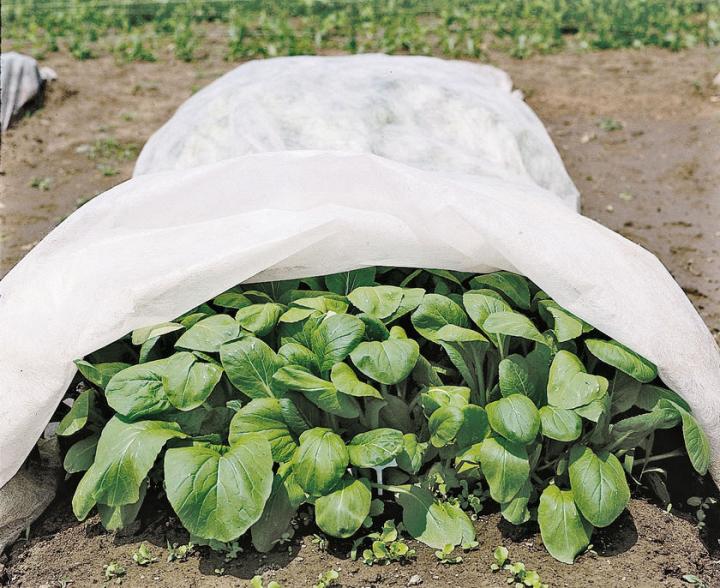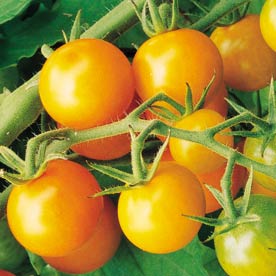Question:
Can I plant tomatoes in February?
Answer: Yes!
Yes, if the temperature in your garden is warm enough.
 In many parts of the country, February marks yet another month of shoveling snow in the driveway, rather than shoveling soil for vegetables. For most states, it is a “shoulder” month to wait a few more patient weeks or even months before putting spring seedlings into the ground. Much of San Diego County, however, affords gardeners such a unique climate that it is frequently warm enough to support nearly year-round growing for even the heat-loving tomato.
In many parts of the country, February marks yet another month of shoveling snow in the driveway, rather than shoveling soil for vegetables. For most states, it is a “shoulder” month to wait a few more patient weeks or even months before putting spring seedlings into the ground. Much of San Diego County, however, affords gardeners such a unique climate that it is frequently warm enough to support nearly year-round growing for even the heat-loving tomato.
Frost will kill young tomatoes and although frost may still occur during February in inland areas of the county, like El Cajon and Escondido, the National Oceanic and Atmospheric Administration (NOAA) increasingly posits lower and lower chances of frost for our county. During the past decade average temperatures throughout Southern California have been some of the warmest on record. That said, gardeners need to make educated guesses when planting tomatoes in mid-winter. In recent years our mild, mostly dry winters have helped some gardeners coax a typically annual, indeterminate tomato plant all the way through fall, winter, spring, and back into summer fruit production. In fact, some local growers, like Roy Wilburn, Horticultural Manager for Cadence at Poway Gardens, plant their first tomatoes in January. His main crop is planted in February.

Floating Row Cover
Wilburn doesn’t let his colder, inland location deter him from an early planting, but he provides a layer of insurance for the young plants. He grows them in a small tunnel covered with thin, white, UV-treated fabric called floating row covers or “frost blankets”.
If your garden is along the coast and even if it is inland in a spot with a warm southern exposure, chances are you can start tomatoes now. Many micro climates exist in San Diego that could foster “winter tomatoes” with a little protection. Floating row covers will insulate and boost temperatures by 2-8 degrees, protect from near frost and frost conditions, plus have the added benefit of sealing out a majority of pest insects while your tomato plants get established and winter turns to spring.

Sungold
Which varieties do best in February? As a general rule of thumb, the smaller the fruit, the less sunlight and latent heat are necessary to bring the fruit to maturity. Cherry tomato varieties in particular have the advantage in February. “Sungold” is a popular, indeterminate hybrid that matures in a quick 57 days. It’s tangerine skin rewards with consistently sweet fruit even in lukewarm heat. “Supersweet 100” is another favorite, indeterminate cherry that grows large and will require plenty of support. It is resistant to fusarium wilt, root knot nematodes and verticillium wilt, with mature fruit in 65 days. “Black Cherry” is an indeterminate heirloom with purplish, mahogany-brown skin, disease resistance and a 64-day maturation. Look for other cherry tomato varieties that are resistant to disease and mature within a 50-65 day window. For larger tomatoes, look for “early-season” tomatoes, like the “Stupice” (pronounced STU-PEAT-SAY). This is a vigorous, indeterminate plant that produces 3-6 oz tomatoes in as short as 55 days. It only needs 6 hours of daily sun and can withstand cooler temperatures. “Early Girl Hybrid” is another popular, disease-resistant, early harvest variety, with 5 oz fruits maturing in 50 days. “Glacier” is a semi-determinant, cold tolerant, 2 oz. slicing tomato that matures in 55 days. (It is often used in tomato growing competitions for the “earliest” tomato category.) Many varieties originating in Russia, Canada and Sweden -like “Glacier,” “Anna Russian,” “Sub-Arctic 20” and “Silvery Fir Tree” - will also be good bets for early season, cold tolerant tomatoes to try transplanting in February.
If I plant a tomato now how soon can I pick ripe fruit? Temperature is the main factor that determines how fast a tomato plant will grow and produce fruit. The number of days from transplanting to harvest listed for a variety can be used as a guide but it is based on having the best temperature for growth. A tomato planted now will grow slower than one planted in mid-spring or early summer. A tomato stops growing when the temperature is below 50 degree Fahrenheit. Above this minimum threshold the plant’s growth rate increases as the temperature rises, then levels off in an optimal range and finally declines as the temperature approaches an upper limit. The optimum day temperature for tomatoes is 79-90 degree Fahrenheit. When night temperatures drop below 55 degree Fahrenheit, the flowers on most tomatoes will drop and not set fruit.

